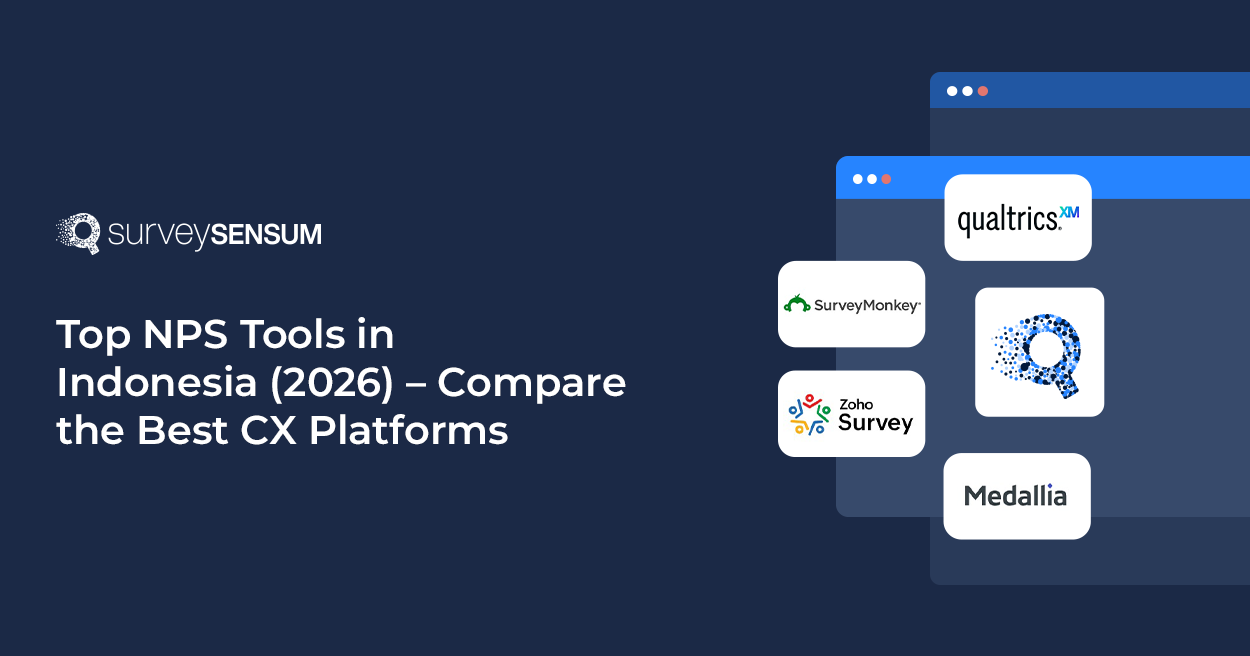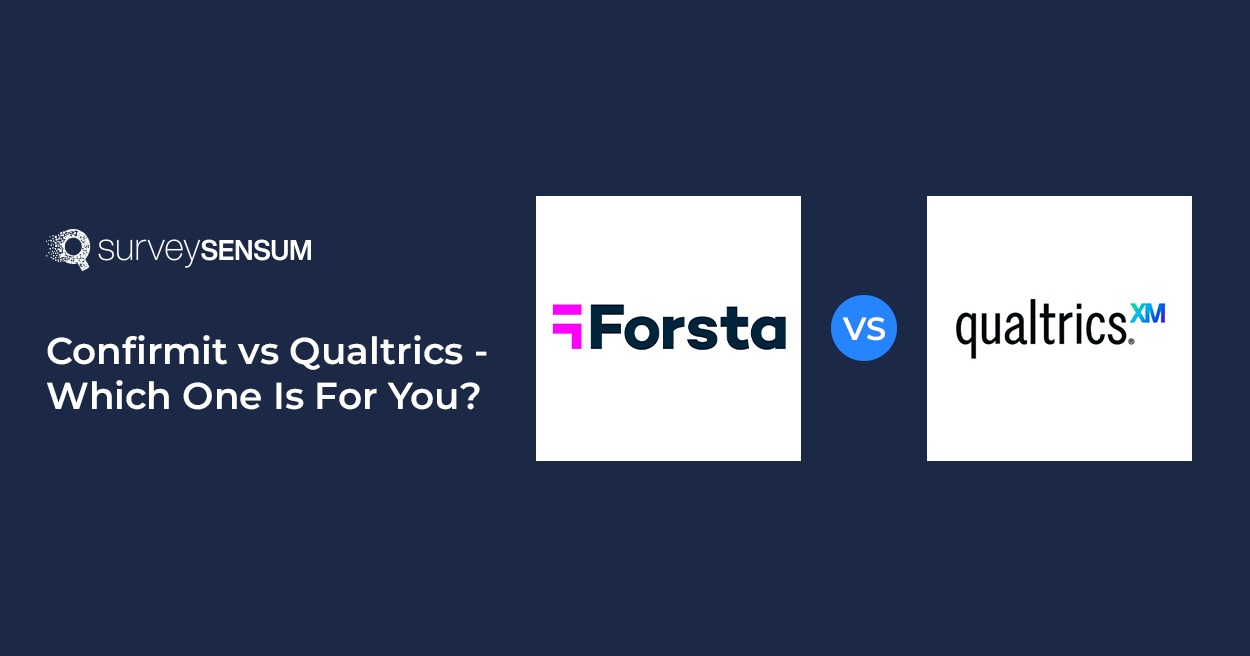

Did you know that asking the right questions can make all the difference in gathering meaningful feedback?
Picture this: You receive a CSAT survey after your recent purchase at a clothing brand. The survey had only 5 questions but all of them were open-ended questions, I mean who has the time for that? So, naturally, you give one-word answers just to get it over with. Now, think about the authenticity of the feedback received by the company, do you think your feedback will be actionable for the? No, because they are too vague and are incapable of expressing your sentiment.
Asking the right question in a customer feedback survey not only gives you valuable insights into your customers’ experiences but also demonstrates your commitment to understanding and improving their journey with your company.
But how to do that? Well, simple, by creating an effective survey design with good survey questions using a survey builder tool.
So, let’s master the art of creating effective survey design by understanding the importance of asking the right questions and exploring 30 good survey questions that can help you unlock valuable feedback from your customers.
But before that, how about we understand what are good survey questions?
What is a Good Survey Question?
A good survey question is one that effectively captures the information needed to achieve the survey’s objectives while being clear, concise, and relevant to the customers. Each question should be constructed in an easily understandable manner, free from ambiguity, and devoid of jargon or technical language that may confuse participants.
When customers clearly understand the question being asked, they are more likely to provide accurate and meaningful responses, thereby enhancing the reliability and validity of the survey data.
Let’s explore further and see some examples of good survey questions.
Good Survey Questions Examples
Here are the best 30 good survey questions examples.
1. Demographic Survey Questions
- What is your age?
- What is your gender identity?
- What is your highest level of education completed?
- What is current your employment status?
- In which country do you currently reside?
2. Market Research Survey Questions
- How frequently do you purchase [product/service]?
- What factors influence your decision to buy [product/service]?
- On a scale of 1-7, how satisfied are you with the pricing of [product/service]?
- What other brands do you consider when purchasing [product/service]?
- What improvements would you like to see from our brand in the future?
3. Customer Satisfaction Survey Questions
- On a scale of 1-5, how satisfied are you with your overall experience with our company?
- Were our customer service representatives helpful in resolving your issue?
- How would you rate the timeliness of our response to your inquiries?
- Did our products/services meet your expectations?
- Were you able to easily navigate our website to find what you were looking for?
4. Brand Awareness Survey Questions
- Have you heard of our brand before taking this survey?
- How did you first learn about our brand?
- How familiar are you with our products/services?
- What words come to mind when you think of our brand?
- How likely are you to consider our brand for future purchases?
5. Net Promoter Score Survey Questions
- On a scale of 0 to 10, how likely are you to recommend our company to a friend or colleague?
- What is the primary reason for your score?
- Is there anything we could do to improve your likelihood of recommending us?
- How likely are you to continue using our products/services in the future?
- Would you be willing to provide a testimonial or review of our company?
6. Product Feedback Survey Questions
- On a scale of 1-5, how satisfied are you with the quality of our product?
- Were there any features of our product that you found beneficial?
- How likely are you to purchase our product again in the future?
- What improvements or enhancements would you like to see in our product?
- Overall, how would you rate your experience with our product?
So, use these effective survey questions in your next survey to gather actionable feedback and boost your customer experience.
Listen to the voice of customers and identify areas of improvement with SurveySensum’s well-crafted customer surveys that come with industry-specific survey templates.
Now, that we have some examples of good survey questions to draw inspiration from, let’s explore what are the different types of survey questions you can create.
Different Types of Survey Questions [With Examples]

1. Open-Ended Survey Questions

Open-ended questions allow customers to provide detailed, free-form responses. They are particularly useful when businesses want to gather in-depth insights, feedback, or suggestions from their customers.
Examples:
- What factors influenced your decision to purchase our product?
- Please share any additional comments you have regarding our customer service.
- What improvements would you suggest to enhance our website usability?
2. Close-Ended Survey Questions

Close-ended questions provide customers with predefined answer options to choose from. These questions are useful for quantifying responses and making data analysis more efficient.
Examples:
- Did you find the information provided helpful? (Yes/No)
- On a scale of 1 to 5, how satisfied are you with our delivery service? (1 – Very dissatisfied, 5 – Very satisfied)
- Have you used our mobile app in the past month? (Yes/No)
3. Rating Scale Survey Questions

Rating scale questions ask customers to rate their level of agreement, satisfaction, or preference on a numerical scale. These questions provide quantitative data and allow researchers to measure the intensity of customers’ opinions or attitudes.
Examples:
- Please rate your overall satisfaction with our product/service on a scale of 1 to 10.
- How likely are you to recommend our company to others on a scale of 0 to 10? (0 – Not at all likely, 10 – Extremely likely)
- On a scale of 1 to 5, how would you rate the quality of our customer support?
4. Likert Scale Survey Questions

Likert scale questions are a type of rating scale question that measures customers’ agreement or disagreement with a statement. customers are asked to select from a range of options, such as “strongly disagree,” “disagree,” “neutral,” “agree,” or “strongly agree.”
Examples:
- Please indicate your level of agreement with the following statement: “I am satisfied with the speed of service provided.” (Strongly disagree, Disagree, Neutral, Agree, Strongly agree)
- How strongly do you agree or disagree with the statement: “Our company values customer feedback?” (1 – Strongly disagree, 5 – Strongly agree)
To what extent do you feel that our product meets your needs? (Not at all, Somewhat, Moderately, Very much, Completely)
5. ‘Yes’ or ‘No’ Survey Questions

Yes/no questions offer binary response options, requiring customers to choose between two options. These questions are easy to answer, making them suitable for surveys with simple inquiries.
Examples
- Have you ever visited our website before? (Yes/No)
- Are you satisfied with the response time of our customer support team? (Yes/No)
- Would you recommend our product to a friend or colleague? (Yes/No)
6. Multiple-Choice Survey Questions

Multiple-choice questions present customers with several answer options, allowing them to select one or more choices that best apply to them. These questions offer flexibility for customers and can cover a wide range of topics.
Examples:
- How satisfied are you with your recent interaction with our customer service? (Very dissatisfied, Dissatisfied, Neutral, Satisfied, Very Satisfied)
- Which of the following factors influenced your purchase decision? (Price, Quality, Brand reputation, Convenience)
- How often do you shop from our brand? (Not at all, Rarely, Sometimes, Frequently, Very Frequently)
7. Grid Survey Questions

Grid survey questions, also known as matrix questions, help collect data on multiple related variables in a structured and efficient manner. They present customers with a grid or table format, where they can respond to multiple dimensions using similar scales or response options.
These types of questions can be used to assess satisfaction across multiple dimensions, such as product quality, customer service, and pricing.
Examples:
- Please rate the following aspects of our product/service on a scale of 1 to 5:
- Ease of use
- Customer support
- Value for money
- Product quality
2. How would you rate your satisfaction with the following features of our website?
- Navigation
- Search functionality
- Content relevance
- Visual appeal
3. Please indicate your agreement with the following statements:
- Our company values customer feedback.
- Our products meet the quality standards promised.
- Our pricing is competitive in the market.
- Our customer service team is responsive to inquiries.
8. Rate Attributes Survey Questions

In rate attributes customers are asked to rate each attribute on a scale, allowing businesses to understand which attributes are most valued or in need of improvement.
These types of survey questions help assess the satisfaction level of different attributes related to a product, service, or experience in the same question. This is especially helpful in determining prioritization related to product improvements or new feature developments.
Examples:
1. On a scale of 1 to 5, please rate the following attributes of our product:
- Durability
- Performance
- Design
- Affordability
2. How would you rate the following characteristics of our customer service?
- Friendliness
- Knowledgeability
- Efficiency
- Problem-solving ability
3. Please rate the importance of the following factors when making a purchasing decision:
- Price
- Brand reputation
- Product features
- Customer reviews
9. Image Choice Survey Questions

Image choice questions present customers with visual stimuli, such as logos, product designs, or advertising materials, and ask them to make choices based on the images provided. These questions engage customers visually and can provide valuable insights into their preferences.
10. Media Upload Survey Questions

Media upload questions allow customers to upload files, images, or videos as part of their responses. These questions are useful for gathering multimedia content from participants, such as testimonials, product reviews, or user-generated content and you can find best practices in ugc marketing blog.
Launch your first customer survey and engage with your customers with well-created surveys with a variety of question types.
8 Tips to Write Good Survey Questions
Writing good survey questions is essential for collecting accurate and meaningful data. Here are some tips to help you craft effective survey questions:
- Define your objectives: Clearly outline the goals and objectives of your survey before designing any questions as this will help you create focused and relevant questions.
- Keep it clear and concise: Use simple and straightforward language to ensure that your questions are easily understood by all customers.
- Avoid leading or biased questions: Ensure that your questions are neutral and unbiased to obtain objective responses from participants. Avoid using loaded language or leading phrases that may influence customers’ answers.
- Use a variety of question types: Incorporate different types of questions, such as open-ended, close-ended, rating scale, etc. Choose question formats that best suit the information you want to collect.
- Provide response options: For close-ended questions, offer clear and comprehensive response options that cover all possible answers. This allows customers to select the option that best reflects their thoughts or experiences.
- Use balanced scales: When using rating scales or Likert scales, ensure that the scale is balanced and includes an equal number of positive and negative options. This prevents response bias and provides more accurate data.
- Pilot test your questions: Before administering the survey, pilot test your questions with a small group of participants to identify any issues with wording, clarity, or interpretation.
- Keep it relevant: Only include questions that are directly related to your research objectives. Avoid asking unnecessary or irrelevant questions that may increase respondent fatigue and reduce survey completion rates.
→ Read more on the Webinar Survey Questions.
Conclusion
Crafting good survey questions is crucial for collecting accurate, insightful, and actionable data. Good survey questions are clear, relevant, and unbiased, allowing customers to provide meaningful and actionable feedback that contributes to informed decision-making. Well-crafted survey questions play a pivotal role in the success of research efforts, enabling businesses to gather reliable insights and make informed decisions based on the collected data.
Now, in order to create good surveys with even great survey questions, you need a robust customer feedback tool, like SurveySensum that comes with customizable industry-specific survey templates and pre-designed questions. This will save you a ton of time and effort as you won’t be creating surveys from scratch!















